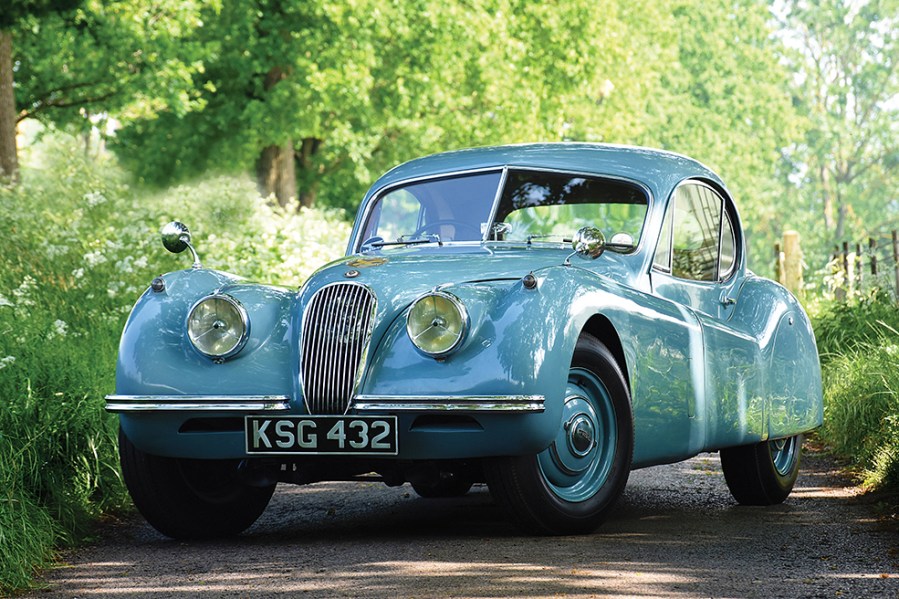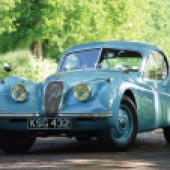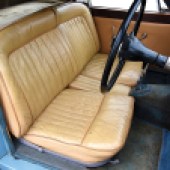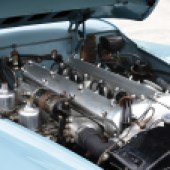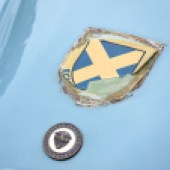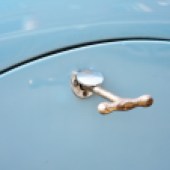With many examples of the Jaguar XK120 having undergone vigorous restorations, we find out how a completely unrestored example fares today
Driving a 1950s car in today’s modern world reminds you of the simplicity of driving. The simple pleasure that can be had from getting behind the wheel and going for a drive; that big steering wheel in front of you, three pedals and nothing to aid your experience. It is simply you and the car. There is something almost therapeutic about the whole experience, and a classic like the 1953 Jaguar XK120 seen here can bring out a whole host of driving emotions that you never thought existed.
Introduced in 1948 at the British Motor Show as a testbench for the newly built XK engine, the XK120 is a car that almost never existed. Its sole purpose was to showcase the 3.4-litre straight-six engine, that would later become the backbone of Jaguar cars for decades. If it wasn’t for its curvaceous lines and sheer beauty, Sir William Lyons wouldn’t have made the decision to put the car into production.
There are so many aspects of this car that demands attention, and all are equally as important as the other. First up is the engine, 3.4-litres in displacement with a pair of chain-driven camshafts on top of an aluminium head. Power was rated at 160bhp with a monstrous 195lb ft of torque; enough to complete 0-60mph in just 10 seconds and go on to a well-known 120mph.
The makeup of the car was equally as impressive, an all-aluminium body kept the weight down and a shortened version of a new luxury saloon chassis provided the framework. That being said, with demand being so high, 1950 saw the switch from aluminium to pressed steel, an inevitability to speed up production. All the early cars were purely two-seater roadsters.
The first of two additional models arrived in 1951 in the form of a fixed head coupe, as seen here. Other changes saw the FHC become unique for its time, introducing saloon car interior appointments, which included wind-up windows, lockable doors and a wood veneer dashboard.
The last model to be introduced was the drop head coupe, which combined the brilliance of open-top driving while also having an easy hood to close if the weather so demanded. Production of all XK120 variants lasted until 1954 when it paved the way for the XK140, and eventually the E-Type.
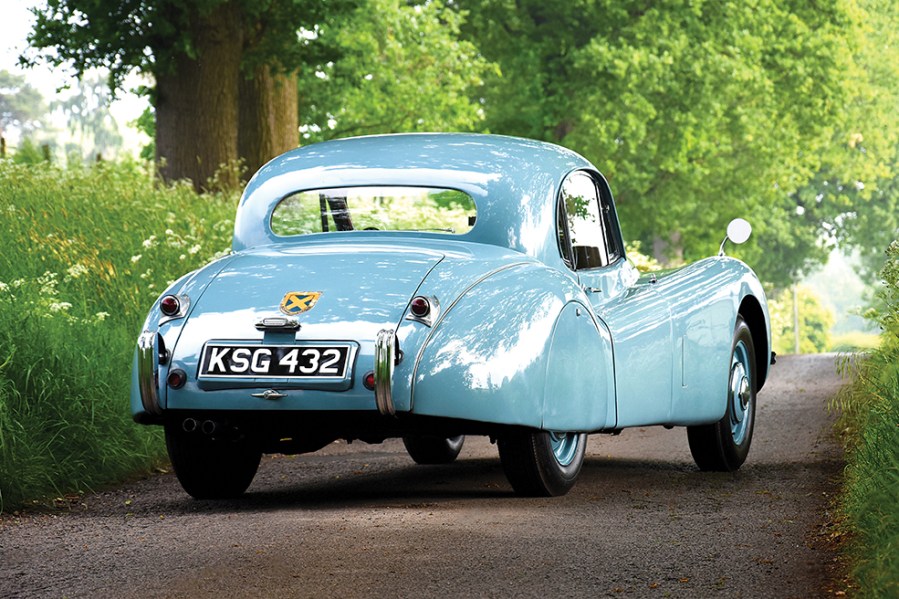
Jaguar XK120 on the road
I wasn’t sure what to expect with the XK120. I’d read reviews in the past and every single one marvelled in its brilliance. I was worried that I’d put far too much pressure on the 70-year-old design to deliver something marvellous today. I was wrong.
This example is an unrestored original car. That means that all of its history is embedded into its metal. The bodywork has a few stone chips, scratches etc that you’d usually find, but it still shone like it was new. The chrome ascents were as eye catching today as I imagined they were in 1953 when this car was registered. Hop inside and you’re greeted with a bus-sized steering wheel and a leather-trimmed bench. The seats are scratched but this adds to the nostalgia that many restored cars miss out on. If it was your own car you’d be tempted to retrim, to bring it back to its former glory, but having that extra piece of history and knowing that previous owners had used this car rather than let it lie undriven brings about a wry smile. It is a car beaming with history, and all the better for it.
The seating position feels a little odd at first. You sit perfectly comfortable, but the wheel is very close to your body, with your elbows pointing directly to the window and passenger respectively. Given the lack of airbags, that isn’t so much a problem as it is today, but getting used to the big wheel being so close to your body isn’t easy, particularly when manoeuvring tight corners that require a lot of steering lock. That being said, sitting that touch closer to the steering wheel does mean it’s easier when parking, as the unassisted steering is heavy, naturally.
Select first, when stationary as there are only synchros in second, third and fourth, and with a generous amount of throttle you get moving. The clutch pedal is interesting in this example, due to its original nature, the pedal has some play, which would be a nice way of putting it. Not only does it compress forward and back, but it also dances left and right, so you have to be both careful, but assertive, otherwise you’ll get nowhere.
On the move it’s a tough machine to get going, that’s not through a lack of performance, more so with its movement on the road. The wheel has to be constantly adjusted to keep you facing forward, and with almost 45 degree of play before the wheels are affected, its unnerving to begin with. It’s simply a matter of time, though, and 15 minutes in the car is enough to understand the way it operates, and you begin to worth with it.
The engine dominates the experience, though. The sound from the six-cylinder unit is intoxicating, with a strong, deep tone low down and a purposeful growl higher up. The torque is available from so low down that you’re able to pootle around in third gear for much of the time. It’s difficult to pinpoint just how you should drive this car. On the one hand it’s almost 70 years old, a level of care and attention should always be applied. Driving to the south of France on a calm, slow drive taking in the scenery would probably be up there with one of the finest driving experiences you could ever imagine. But on the other side, this 3.4-litre engine has so much performance, having once been the fastest production car in the world, so you almost have an obligation to see where the performance takes you.
With a representative from DM Historics sat in the passenger seat, whom this car is on sale with, I’m encouraged to put my foot down and climb through the rev range to enjoy a spirited drive. The XK120 wants to travel quickly, it almost feels more natural driving it at speed than it does through town. While the brakes are somewhat concerning when approaching a corner, if you prepare yourself for what’s ahead, the XK120 becomes a sheer delight. You lose yourself in a cacophony of sound and boundless reward for wrestling the wheel through corners.
At one point, in the January cold weather, the rear wheels begin to lose traction out of a junction, but a frantic throw of the wheel in the other direction gets you pointing the right way. Yes, I power slid a 67-year-old car. By accident of course, but now I can say that I did a powerslide in a Jaguar XK120. Not many can own up to that…

The Ecurie Eccose connection
Quite how chassis #669035 came to have its Ecurie Ecosse badges is shrouded in mystery. These badges have been photographed on the car prior to 1970 and have consistently been seen in photographs of the car throughout its illustrious history. The car was distributed by dealer Rossleigh of Edinburgh with the original number plate ‘KSG 432’, which remains on the car to this day. Rossleigh held the franchise for a number of British motoring icons, one of these being Jaguar.
Rossleigh was a prestigious dealership with a number of future Ecurie Ecosse drivers frequently purchasing cars from the firm. David Murray was one of those individuals, and shortly after establishing Merchiston Motors Murray and Ian Stewart took delivery of the first and second XK120s in Scotland from Rossleigh.
Ecurie Ecosse drivers were known to be fond of the XK120 and the race team soon became synonymous with Scottish motorsport thanks to incredible back to back Le Mans wins in 1956 and 1957. It is believed that shortly after purchase the Nicoll family placed the Ecurie Ecosse badges on Chassis #669035 in support of the national team success and links with the Ecurie Ecosse founder, David Murray.
Ian Stewart conceived the racing team’s colour, Metallic Flag Blue during recovery from an accident in which he drove his Jaguar XK120 through a hedge in 1952. He drew the original design for Ecurie Ecosse badge with the shield and St Andrew’s Cross plus a little stick man. The stick man was later dropped for the race car badges but kept on the small lapel badges. Today, Chassis #669035 still features the proud Scottish racing team’s badges, both of which have faired incredibly well after all these years of motoring.
Jaguar XK120: our verdict
When it comes to driving what can only be described as a legend in automotive history, there’s almost a level of pressure to tell people how wonderful it is. But there is no such pressure here. The Jaguar XK120 is one of those automotive fairytales in the sense that you don’t need to tell anyone how great it is, the reaction on your face when someone asks what the experience was like tells them what they need to know.
It’s fast, beautiful and the fact that this car hasn’t been restored, reliable, too. There’s a reason why some examples have sky-rocketed to over £100k, and that’s simply because cars this beautiful are few and far between. An engine as exquisite as that aluminium-alloy XK deserves to be heard.

